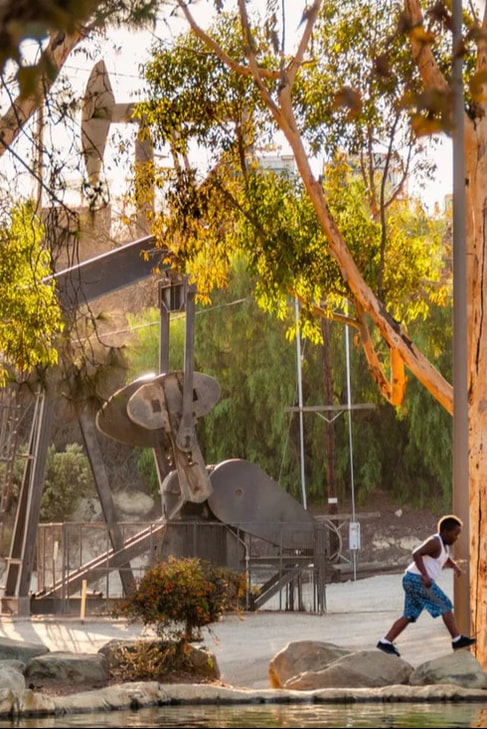OIL DRILLING:
|
Frequently Asked Questions
Why has oil drilling in our neighborhoods been allowed to go on for so long?
At one point our county and state elected officials thought that strong regulations would be enough to control the threats to health that oil drilling presents to communities. But after a decade, we've seen that just isn't the case. These rules did nothing to phase out hundreds of wells that are still pumping oil today, and even allowed new wells to be drilled as close as 400 feet from a home or a school. Additionally, oil companies routinely break that rules and view the fines as a cost of doing business. Residents, scientists, and advocates now recognize that a complete phase-out of oil wells – both active and inactive – is the safest solution for the health and safety of communities.
How is oil drilling a threat to justice?
For decades, the communities that have been most affected by oil drilling in Los Angeles County have been Black and Latinx communities. This disparity is due to zoning rules that don't provide the same protections to these communities as they do to more other neighborhoods in the city. In fact, drilling sites in south Los Angeles and Wilmington are on average 260 to 300 feet closer to homes than those in West L.A. and the Wilshire district, in addition to having fewer safety protections. We believe someone's health shouldn't be a greater risk, just because of where they live. By ending oil drilling, we have the opportunity to not only make L.A. county healthier, but to make it more just.
Why are there so many oil wells in LA?
The fossil fuel industry actually played a significant role in Los Angeles’ early development. In the 1890s, the small town of Los Angeles (then population 50,000) discovered some of the most productive oil fields in history. With a lot of easily accessible oil, little regulation and no understanding of the health or environmental impacts, oil drilling in Los Angeles grew quickly. By 1930, California was producing nearly one quarter of the world's oil output, and its population had grown to 1.2 million. Now, even though we've seen a significant drop of in output, oil companies are determined to squeeze every last bit of oil out of the ground, all at the expense of communities. It's time to stop this practice once and for all and put the health of Angelenos first.
At one point our county and state elected officials thought that strong regulations would be enough to control the threats to health that oil drilling presents to communities. But after a decade, we've seen that just isn't the case. These rules did nothing to phase out hundreds of wells that are still pumping oil today, and even allowed new wells to be drilled as close as 400 feet from a home or a school. Additionally, oil companies routinely break that rules and view the fines as a cost of doing business. Residents, scientists, and advocates now recognize that a complete phase-out of oil wells – both active and inactive – is the safest solution for the health and safety of communities.
How is oil drilling a threat to justice?
For decades, the communities that have been most affected by oil drilling in Los Angeles County have been Black and Latinx communities. This disparity is due to zoning rules that don't provide the same protections to these communities as they do to more other neighborhoods in the city. In fact, drilling sites in south Los Angeles and Wilmington are on average 260 to 300 feet closer to homes than those in West L.A. and the Wilshire district, in addition to having fewer safety protections. We believe someone's health shouldn't be a greater risk, just because of where they live. By ending oil drilling, we have the opportunity to not only make L.A. county healthier, but to make it more just.
Why are there so many oil wells in LA?
The fossil fuel industry actually played a significant role in Los Angeles’ early development. In the 1890s, the small town of Los Angeles (then population 50,000) discovered some of the most productive oil fields in history. With a lot of easily accessible oil, little regulation and no understanding of the health or environmental impacts, oil drilling in Los Angeles grew quickly. By 1930, California was producing nearly one quarter of the world's oil output, and its population had grown to 1.2 million. Now, even though we've seen a significant drop of in output, oil companies are determined to squeeze every last bit of oil out of the ground, all at the expense of communities. It's time to stop this practice once and for all and put the health of Angelenos first.
Take Action Now

Send an email to Los Angeles County Supervisors and the Department of Regional Planning today saying you support a policy to phase out oil drilling.

